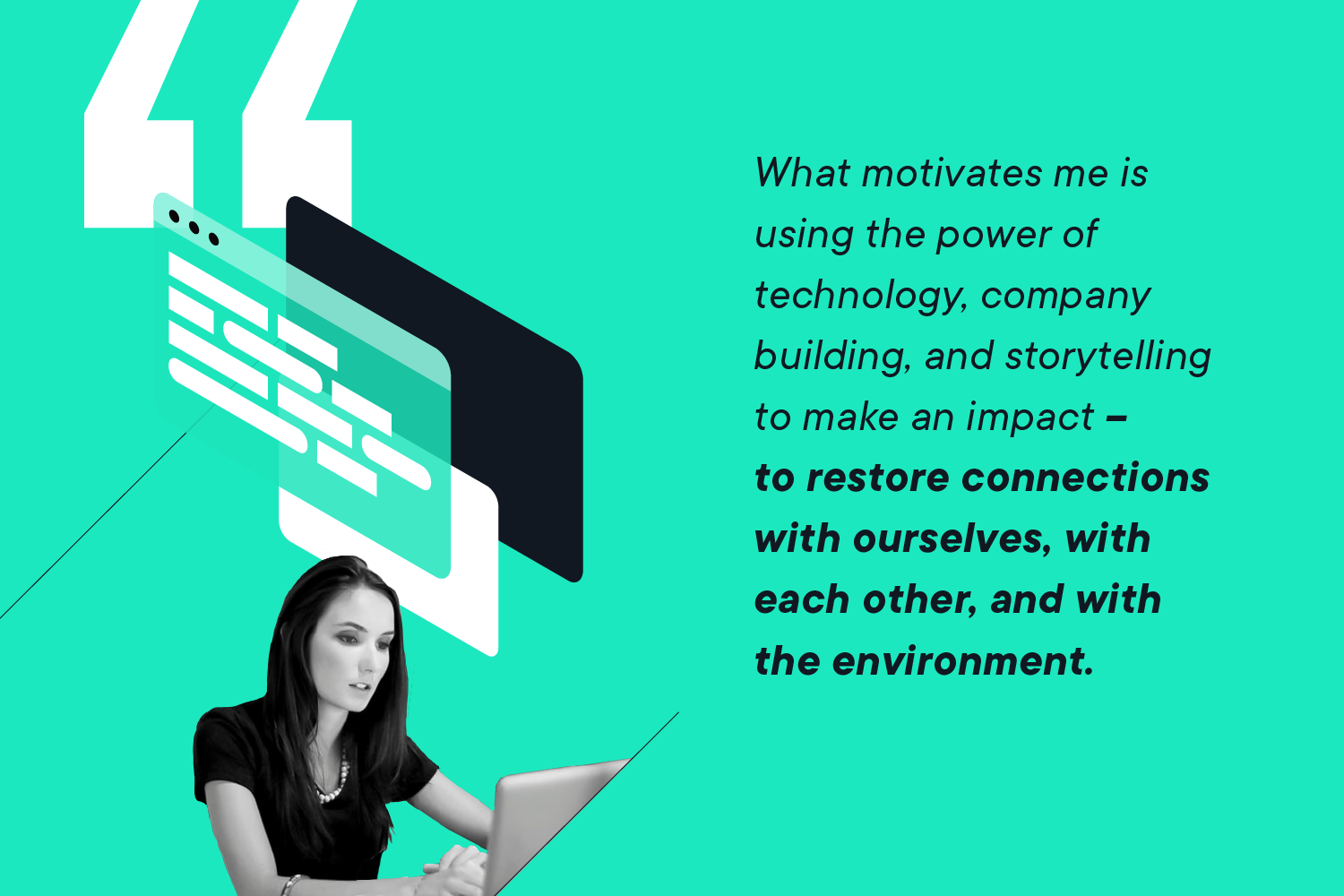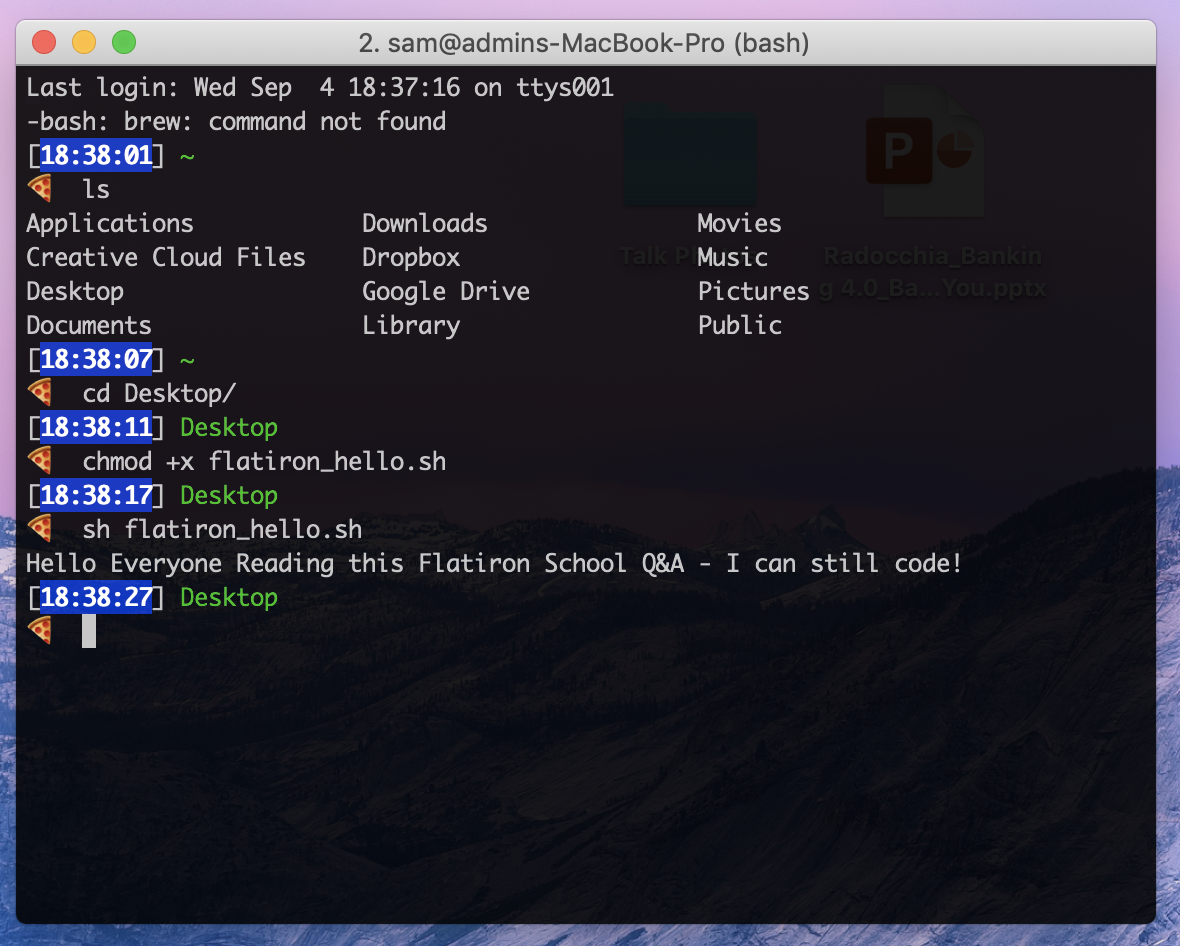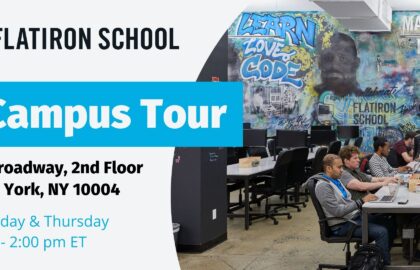
Samantha Radocchia can now add bestselling author to her impressive resume. The Flatiron School alumna and entrepreneur’s latest adventure is “Bitcoin Pizza.” In the interview below, Samantha shares her inspiration for the book and her vision of the future.
Congrats on the book! Can you talk a bit about “Bitcoin Pizza” and the inspiration for writing the book?
Thank you! This book is by far the wildest ride I’ve been on thus far (and I’ve been on a lot of wild rides). The craziest thing is that, unlike software development — where you constantly iterate, respond to feedback, fix bugs, and change — books are static media. You put it out there, get the feedback, and … do nothing. Well, obviously you do things like sell it and talk to folks. I’m still in shock that the book hit #1 on Amazon’s Best Seller list on the first day it was released.
I’ve had the unique privilege of working at the cutting edge of technology for a lot of my career. What I’ve seen, now more than ever, is that there’s a lot of uncertainty and fear around our narrative of the future. We see “Black Mirror” episodes about killer drones or social credit scores gone awry. So the question is, is this really the future we want to build?
I wrote the book so that readers could understand the broader socio-cultural, geo-political, macro shifts taking place and why this technology is important, not necessarily what it is or how it works.
The book goes through a bunch of cultural myths, framing narratives, the various crypto and blockchain communities, and ultimately, what a decentralized future looks like. Here’s the Table of Contents! If you get the Hardcover, or get to the end of the Kindle / Paperback, you can even learn how to order pizza with Bitcoin by scanning the Pizza-enabled QR code!
This is truly a unique moment in human history. We’re all taking part in building a new social operating system, the operating system of the future. A better future. A future where we restore connections with ourselves, with each other, with our environment, with the products we consume and everyone has the power to shape that future.
You’ve lived quite the life! From competitive skydiver to today, where does that drive come from?
My drive comes from a lot of sources but I’d mainly say (1) Internally — curiosity to learn and (2) Externally — curiosity about why people behave, organize, and generally act the way that they do.
So first, internal drive: I’m naturally a curious person. When I was a small child and my parents left me at my grandparents’ house for an overnight, they asked, “Does she come with an ‘off button’?” I’d wonder why the sky was blue, how to calculate the area of a ketchup bottle with calculus, how gravity worked (hence the skydiving, I needed some hands-on learning). As I got older that thinking evolved to larger questions, which brings me to the external drive.
The external drivers became became motivators to create my companies. Why are people destroying the rainforests and planet? Why do global supply chains work in the way they do when they are so inefficient? Why do the powers that be want to keep systems entrenched when we have all the tech and resources we need to build more sustainable and equitable systems? Why are people mindlessly online shopping on their mobile phones? Are we in a simulation?
With this natural curiosity, and by asking big questions, I see big problems and even bigger solutions.
That might come off a bit grandiose to sit here and talk about solving the world’s biggest challenges, so I want to clarify: everyone, has the power to make a change in their own life, in one other person’s life, in their local environment. That’s what keeps me going.

You’ve loved tech your whole life, what helped you make the leap full-time into this world?
My brothers (and by extension, me) were into gaming and learned basic coding at a young age. So I’d build super simple HTML/CSS websites, you know, super retro these days with dancing babies, music playing, visitor counters, and lots of neon. They were usually about puppies or games.
My dad ran a retail business and was a systems thinker. I remember running around in warehouses and being amazed by all of the sorting machines, automation, computer programs running off the mainframe which would direct the packages to certain areas of the warehouse and certain trucks.
When I went to college, I wanted to understand how technology impacted people and human behavior — social engineering — so I studied anthropology, neuroscience, and theater. I believed that without adequate understanding of — and support for — the social and cultural elements in technology, engineering would just end up becoming over-engineering.
For my anthropology thesis, I lived in a virtual world called “Second Life,” where I ran a small digital t-shirt shop and sold the digital t-shirts to other avatars in the world in exchange for a virtual currency called Linden Dollars.
That’s probably when I got into bitcoin and could see this entirely new world forming where people spent more and more of their time in, or on, computers, phones, and technology. While I found technology fascinating, I always found the change to be scary, and even a bit dystopian. You know, like that “Matrix” or “Black Mirror” sort of future.
Ultimately, I started my first company because I wanted to harness emerging technologies for the betterment of society and our planet.
What was your Flatiron School experience like?
I was running my first company as CEO, completing a master’s degree in Human-Computer Interaction and Game Design, and studying at Flatiron School in the second-ever cohort. Avi (Flatiron School’s co-founder and first instructor) was an incredible teacher, and I remember just loving how we got our hands dirty on the first day and worked on group projects that felt almost like Scrum teams — something I would later run as Chief Product Officer at my third company.
What did you love most about Flatiron School? Is there something you still use/think about today?
Two things actually that I still use, think about, and do every day!
1. My terminal — See the Pizzas? See the nice message I wrote to you?

2. So, the first day of class we went through some pre-work and configurations. A lot of them. I got super excited about it and learned how to put an emoji in my terminal through the bash profile.
I even wrote this super super old-school blog post about “How to Customize your Command Line by Adding Emoji Icons to the Bash Prompt” as part of the Flatiron School blogging homework.
My terminal still looks the same to this day.
Note the pizza emoji. Perhaps some crazy foreshadowing for my book, Bitcoin Pizza: The No-Bullshit Guide to Blockchain, marking the first ever transaction with bitcoin (a pizza of course)!
(2) Getting into the habit of blogging for Flatiron School (you can see my oldies here) trained my for a career of writing, thinking, and thought leadership. In addition to writing my book, I’m a contributor for Forbes on Crypto / Blockchain and write my own blog, called Radical Next.
(3) We had this day where we learned about locks, keys, and lock picking. I can still break out of handcuffs with a broken soda can. Haven’t used that one, but hey, you never know!
If you’re as excited as Sam is about tech, we encourage to try software engineering for yourself! We have a free Coding Bootcamp Prep that lets you see what it’s like to be a software engineer through over 75 hours of hands-on instruction.




